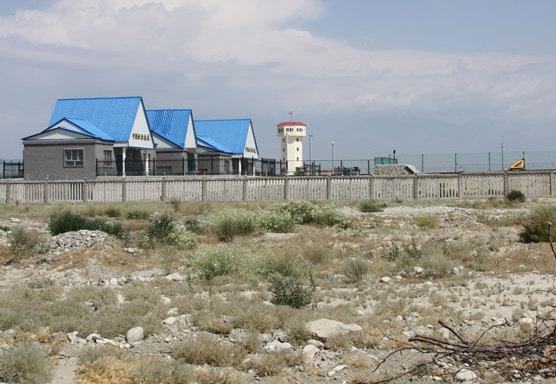Xinjiang Diary Day 7: Getting to know in Yining, Xinjiang
- By Doris
 0 Comment(s)
0 Comment(s) Print
Print E-mail CRI, July 15, 2014
E-mail CRI, July 15, 2014
At the China-Kazakhstan border near Yining, Xinjiang on Sunday, July 13, 2014. [Photo: CRIENGLISH.com]
Located just 70 kilometers from China'border with Kazakhstan, Xinjiang's city of Yining is probably one of the most significant cities on the historical silk road. In the 1911 Encyclopedia Britannica, the city, which was then known as Ghulja, is called the economic and commercial center in a "territory in north-west China" bounded by the Russian border and the mountains that surround the Ili basins.
Yining feels like an international city. In the markets, you can see Russian sweets, Kazakh chocolate and German face cream. There are clothes in the style of India and the Middle East as well as those from the local Uyghurs and Kazakhs. All sorts of languages are also spoken here.
The Border
One can't come to Yining and not see the border with one of China's many neighboring countries, Kazakhstan. The path to the border is basically deserted. There're no office buildings and no people. We were the only vehicle on the road for approximately 50 kilometers. Then several trees appeared and at the end, there was a sandy hill with a barbed wire in the middle of it. I didn't know what I was expecting the border to be like but I was a little unimpressed by it.
Ethnic diversity in Xinjiang
What did impress me today was the ethnic diversity of Yining. Before I went on this trip, I was told that Xinjiang was one of the most culturally diverse regions in the country with over 42 minority groups. However, I haven't seen a large minority group until today.
First, we met with several men in traditional Uyghur clothing who seem to be elders of the community and were introduced as members of the Xinjiang Production and Construction Corps. Some of them spoke very little mandarin and our press conference was conducted mainly in Mandarin and the Uyghur language.
There are also other ethnic groups such as Kazakhs, Hui and Han Chinese living in the area and what fascinated me the most is the fact that all these cultural groups, with very different backgrounds and religious beliefs, can live together in peace. I truly believe this is an indication that China is a multicultural country and the
Chinese people have the utmost respect for other cultural and minority groups.






Go to Forum >>0 Comment(s)